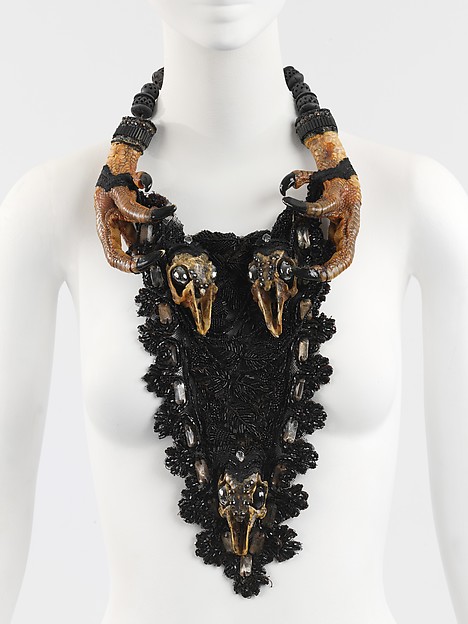The presenters began by explaining that they had changed the title to reflect the emphasis of presentation. The new title became "An exploration of significance and dependency in the conservation of software-based artwork."
Based upon their research, the presenters decided to focus on dependencies rather than obsolesence per se. The project was related to PERICLES, a pan-European risk assessment project for preserving digital content. PERICLES was a four-year collaboration that included systems engineers and other specialists, modeling systems to predict change.
The presenters used two case studies from the Tate to examine key concepts of dependencies and significant properties. Significant properties were described as values defined by the artist. Dependency is the connection between different elements in a system, defined by the function of those elements, such as the speed of a processor. The research focused on works of art where software is the essential part of the art. The presenters explained that there were four categories of software-based artwork: contained, networked, user-dependent, and generative. The featured case studies were examples of contained and networked artworks. These categories were defined not only in terms of behavior, but also in terms of dependencies.
Michael Craig-Martin's Becoming was a contained artwork. The changing composition of images was comprised of animation of the artist’s drawings on LCD screen, using proprietary software. Playback speed is an example of an essential property that could be changed, if there were a future change in hardware, for example.
Jose Carlos Martinat Mendoza's Brutalism: Stereo Reality Environment 3 was the second case study discussed by the presenters. This work of art is organized around a visual pun, evoking the Brutalist architecture of the Peruvian “Pentagonito,” a government Ministry of Defense office associated with the human rights abuses of a brutal regime. Both the overall physical form of the installation, when viewed merely as sculpture, and the photographic image of the original structure reinforce the architectural message. A printer integrated into the exhibit conveys textual messages gleaned from internet searches of brutality. While the networked connection permitted a degree of randomness and spontaneity in the information flowing from the printer, there was a backup MySQL database to provide content, in the event of an interruption in the internet connection.
The presenters emphasized that the dependencies for software-based art were built around aesthetic considerations of function. A diagram was used to illustrate the connection between artwork-level dependencies. With "artwork" in the center, three spokes radiated outward toward knowledge, interface, and computation. An example of knowledge might be the use of a password to have administrative rights to access or modify the work. A joystick or a game controller would be examples of interfaces. In Brutalism, the printer is an interface. Computation refers to the capacity and processor speed of the computer itself.
Virtualization has been offered as an approach to preserving these essential relationships. It separates hardware from software, creating a single file out of many. It can act as a diagnostic tool and a preservation strategy that mitigates against hardware failure. The drawbacks were that it could mean copying unnecessary or undesirable files or that the virtual machine (and the x86 virtualization architecture) could become obsolete. Another concern is that virtualization may not capture all of the significant properties that give the artwork its unique character. A major advantage of virtualization is that it permits the testing of dependencies such as processor speed. It also facilitates version control and comparison of different versions.The authors did not really explain the difference between emulation and virtualization, perhaps assuming that the audience already knew the difference. Emulation uses software to replicate the original hardware environment to run different operating systems, whereas virtualization uses the existing underlying hardware to run different operating systems. The hardware emulation step decreases performance.
The presenters then explained the process that is used at the Tate. They create a copy of the hardware and software. A copy is kept on the Tate servers. Collections are maintained in a High Value Digital Asset Repository. The presenters also described the relationship of the artist's installation requirements to the dependencies and significant properties. For example, Becoming requires a monitor with a clean black frame of specific dimensions and aspect ratio. The software controls the timing and speed of image rotation and the randomness or image changes, as well as traditional artistic elements of color and scale. With Brutalism, the language (Spanish to English) is another essential factor, along with "liveness" of search.
During the question and answer period, the presenters explained that they were using VMware, because it was practical and readily available. An audience member asked an interesting question about the limitations of virtualization for the GPU (graphics processing unit). The current methodology at the Tate works for the CPU(central processing unit) only, not the graphics unit. The presenters indicated that they anticipated future support for the GPU.
This presentation emphasized the importance of curatorship of significant propeeties and documentation of dependencies in conserving software-based art. It was important to understand the artist's intent and to capture the essence of the artwork as it was meant to be presented, while recognizing that the artist’s hardware, operating system, applications, and hardware drivers could all become obsolete. It was clear from the presentation that a few unanswered questions remain, but virtualization appears to be a viable preservation strategy.







 The latest issue of JAIC (Journal of the American Institute for Conservation) is now online, and print copies are mailing shortly. This issue, Vol. 53, No. 2, features the following articles:
The latest issue of JAIC (Journal of the American Institute for Conservation) is now online, and print copies are mailing shortly. This issue, Vol. 53, No. 2, features the following articles: